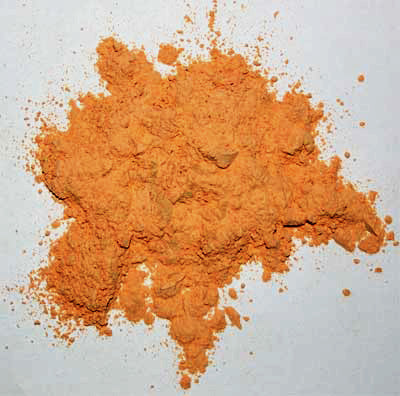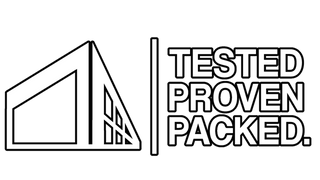What are metal polishing compounds?
Our metal polishing compounds are used with our Airway Buffing Wheels to increase the effectiveness of the wheel while being used during the cutting, buffing, and polishing process. Some are of a coarser consistency and are usually used to remove scratches while the others are finer, which lends to them being used to shine and finish your work. They should be applied to airway buffing wheels by coating the edges of the airway buffs like below:

How do I prep for polishing?
Prepping is almost entirely all about sanding. We recommend starting with 180 grit sanding and stepping forward to 220 grit, and finishing with 400 grit sanding disks. Most polishing, for aluminum, can be polished well after prepping with 400 grit—finer grits are not usually necessary before polishing with tripoli compound.
What are the steps for polishing aluminum?
Tripoli compounds such as our T-88 Tripoli should be used for initial cutting and buffing, with the aim of removing more apparent scratches and blemishes during metal restoration on aluminum. It is the first step on on polishing aluminum and is paired with our Orange Airway Buffing Wheel. It is not used on stainless for polishing.
Our G-16 Green rouge is often used as the second step in polishing aluminum. It is paired with our Yellow Airway Buffing Wheel. This should produce a fantastic clean shine.
We offer two final finishing compounds—blue rouge and the purple polishing compound. Both represent a show finish and we recommend that you pair either one of these final show finishing compounds with a white flannel buffing wheel. Keep in mind many of our polishers are quite happy with the two-step process outlined above and leave show polishes only to their most cherished pieces.
What do the colors mean for metal polishing compound?
The color of the polishing compound is almost always a byproduct of the natural abrasive ingredients. Tripoli powder, pictured below for example, is an abrasive product that along with the other formula's ingredients allows the buffing wheel to polish a metal surface. These abrasives are often pigments as well causing the bar color to take on the appearance of the abrasive.
In situations where similar in color appearances have substantially different abrasive qualities, many manufactures (ourselves included) can add separate pigment or dye to help differentiate the products.

Pro tip:
Use our Rebel Red liquid metal polishes between major cuttings to help maintain a show-quality shine on your vehicles.
What speed should I move the buffing wheel across the surface?
We captured the below video as a guide of how fast you should drag the buffing wheel across the metal surface.
Buffing Wheel Speed for Metal Polishing from Renegade Products USA on Vimeo.
Earn [points_amount] when you buy this item.
RENEGADE Metal Polishing Compound for Buffing Wheels - Pacific Blue
- Unit price
- /per
Free shipping over $125. Code: FREESHIP
Earn Reward Points With Every Order
Pairs well with
Your details are protected and safe with us.
Adding product to your cart
What are metal polishing compounds?
Our metal polishing compounds are used with our Airway Buffing Wheels to increase the effectiveness of the wheel while being used during the cutting, buffing, and polishing process. Some are of a coarser consistency and are usually used to remove scratches while the others are finer, which lends to them being used to shine and finish your work. They should be applied to airway buffing wheels by coating the edges of the airway buffs like below:

How do I prep for polishing?
Prepping is almost entirely all about sanding. We recommend starting with 180 grit sanding and stepping forward to 220 grit, and finishing with 400 grit sanding disks. Most polishing, for aluminum, can be polished well after prepping with 400 grit—finer grits are not usually necessary before polishing with tripoli compound.
What are the steps for polishing aluminum?
Tripoli compounds such as our T-88 Tripoli should be used for initial cutting and buffing, with the aim of removing more apparent scratches and blemishes during metal restoration on aluminum. It is the first step on on polishing aluminum and is paired with our Orange Airway Buffing Wheel. It is not used on stainless for polishing.
Our G-16 Green rouge is often used as the second step in polishing aluminum. It is paired with our Yellow Airway Buffing Wheel. This should produce a fantastic clean shine.
We offer two final finishing compounds—blue rouge and the purple polishing compound. Both represent a show finish and we recommend that you pair either one of these final show finishing compounds with a white flannel buffing wheel. Keep in mind many of our polishers are quite happy with the two-step process outlined above and leave show polishes only to their most cherished pieces.
What do the colors mean for metal polishing compound?
The color of the polishing compound is almost always a byproduct of the natural abrasive ingredients. Tripoli powder, pictured below for example, is an abrasive product that along with the other formula's ingredients allows the buffing wheel to polish a metal surface. These abrasives are often pigments as well causing the bar color to take on the appearance of the abrasive.
In situations where similar in color appearances have substantially different abrasive qualities, many manufactures (ourselves included) can add separate pigment or dye to help differentiate the products.

Pro tip:
Use our Rebel Red liquid metal polishes between major cuttings to help maintain a show-quality shine on your vehicles.
What speed should I move the buffing wheel across the surface?
We captured the below video as a guide of how fast you should drag the buffing wheel across the metal surface.
Buffing Wheel Speed for Metal Polishing from Renegade Products USA on Vimeo.

